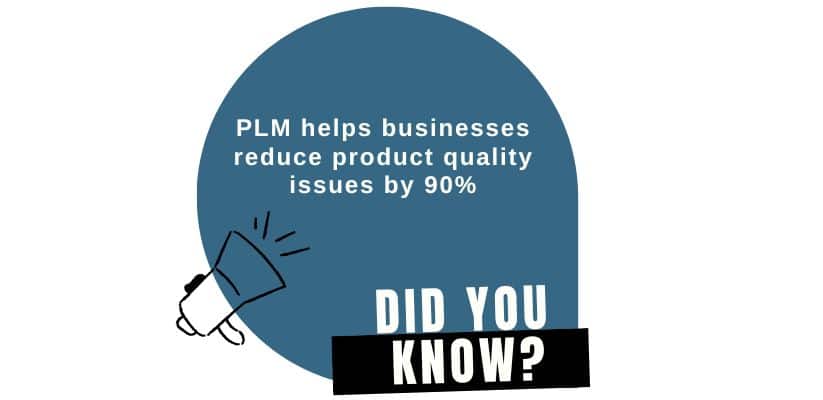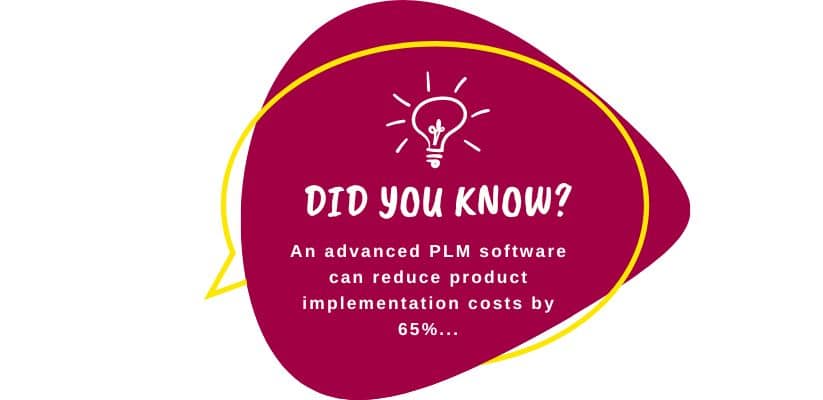At its very basic level, product lifecycle management is a systematic way of managing the thorough journey of a product/ service from its initial stage till its development, service, and finally disposal. In short, product lifecycle management PLM is everything right from the start to its end. So, let us see here the importance of product lifecycle management in business growth in detail.

If your business has been introducing a product in the market, then it might need to carry out various steps in every department of the organization. There are a bunch of challenges to the path of the product’s successful launch. Though the engineering and designing department gives a finished product, the outcome might still fail. Not least, but the sales/marketing team could also skip the chance to make the product more appealing to the customers. Also, a weak link in the process can lead to the lowest profit expansion of the business.
This all might seem like a stumbling block to you!
But do you know what could be the ever best solution to this issue?
It is ‘Better communication’!
It is imperative to properly send information about a product/service across all departments, which indicates the success of an organization. To achieve this, a PLM or a product lifecycle management becomes truly crucial.
This blog post lets us learn everything about product lifecycle management and its significance.
<<Also Read: Why is Product Lifecycle Management (PLM) essential for your company?>>
What is product lifecycle?
A lifecycle management PLM is a model for small businesses that is based on the concept that any product launched in the market needs to go through several stages, including introduction, growth, maturity, and lastly, decline. Though the duration of these stages, as well as the scope, may vary the organizational strategies must stay constant without failing. The product lifecycle is closely connected with marketing while it can also assist small entrepreneurs in developing new products, planning costs, and learning the latest industry trends.
A product lifecycle is a forecasting, control, and planning tool to estimate the business profit.
If your business is in a developing stage, you must explore the way to manage the product life cycle along with its stages.
Why you must have product lifecycle management?
PLM (Product lifecycle management) offers quick and long-lasting results to an organization. It helps enhance the communication among various departments leading to systematic services. This way, employees can get access to the most relevant information without waiting too long for the emails. With easy communication, the resources and time as well can be accurately given to increase the quality of the product. It will develop efficiency externally and internally also. Moreover, customers could also get the profits since their queries would be easily answered in the fastest way.

What factors does PLM involve?
- The nature of the industry and product decides on what parameters the PLM software would revolve. Some of the most crucial factors include-
- Executing different resources including finance, people, and infrastructure
- Securing the business confidential decisions related to product development
- Staying constantly updated with the market trends related to customers, technology, and industry
- Developing and deploying the top-notch sales/ marketing strategies
- Final delivery of lucrative products
<<> Also Read: What is the correlation between Supply Chain Management Software & ERP Solution? >
Significance of the Product Lifecycle Management PLM
There are a number of reasons why business professionals strictly manage a product lifecycle. Some of the prime reasons include-
Proper financial impacts
The investment required from R&D to launch a product like a car, life-saving drugs, or even consumer durables includes billions of investments spread throughout the years. However, if you miss a single PLM process then your company faces high financial implications causing even bankruptcy.
Staying up-to-date
Once success is accomplished, businesses should not get lethargic. For better results, product & project managers should keep a keen watch on the competition with market-transforming products. The best product lifecycle management PLM plan must make sure that businesses keep revisiting their products for any kinds of revisions to be made as per the industry and technology trends.

Changing customer expectations
Today, the enhanced lifestyle has increased the general expectations of customers. Let us see a small incident. If you want to purchase a mobile phone, what do you ask first? Definitely its battery or camera specifications. Coping with these informed and most demanding customer requirements makes it necessary for the managers to review product management plans keenly as a small part of the product development lifecycle process.
Business survival
For the best class outputs, entrepreneurs should be agile and ready to bring required changes on the floor. If they become arrogant or ignorant, then this might keep companies behind the race. It is this reason why the most iconic brands such as Nokia has disappeared from the market.
So, business heads should always have a sense of their survival while ensuring that their product team is reviewing the strategies and plans regularly.
<< Also Read: Product Expiration Management in Sage X3>>
The working of product lifecycle management PLM
PLM does not mean just emailing or preparing any proper documentation. It is way beyond that. Though emails and documentations are parts of PLM, it also includes more engaging parts. As discussed earlier a clear definition of PLM is managing a product right from its start to its disposal. It revolves all around various actions that require servicing, making, and distributing a particular product.
The most important factor of product data management PDM is the collection data of from every department and saving it into a centralized database. This way, the departments working on a specific project can share data with the workers. It is called a unified approach that all workers can fetch benefit from.




